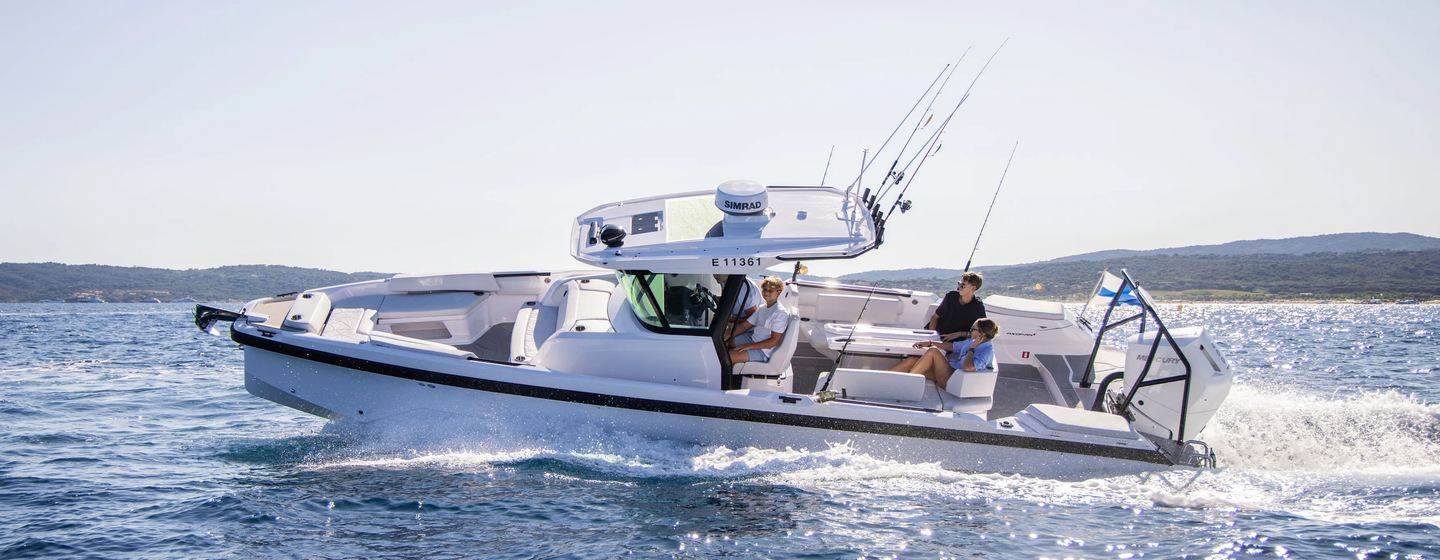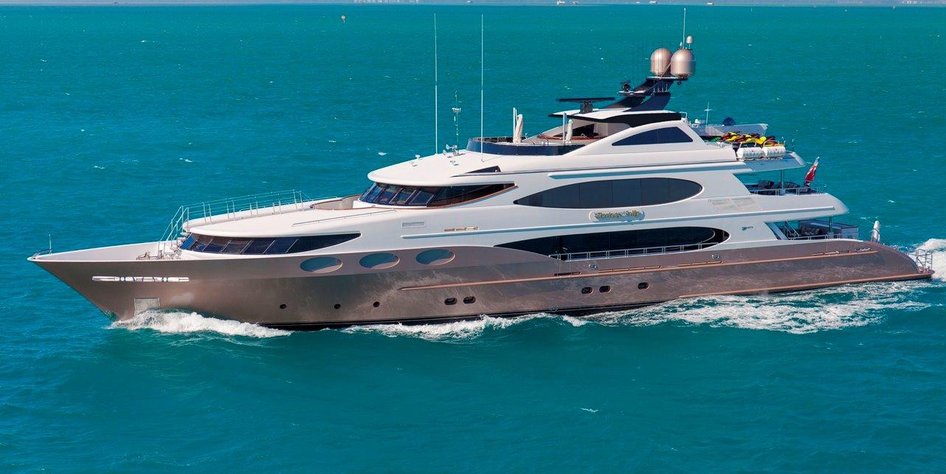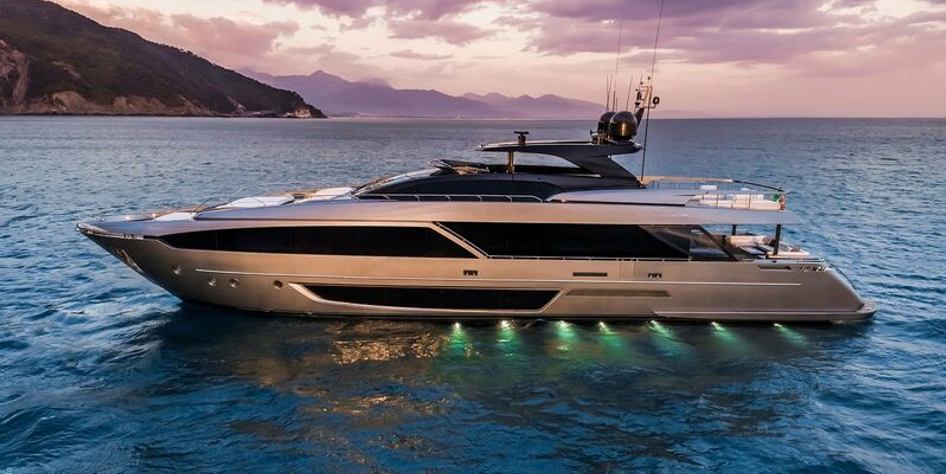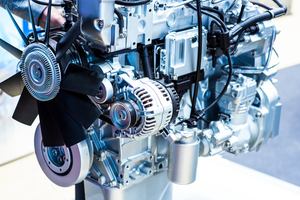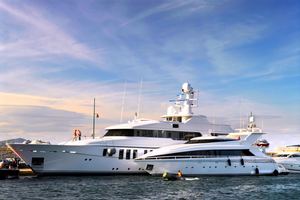Modern center console yachts redefine versatility on the water with their open-concept designs and impressive performance capabilities. These sophisticated fishing machines blend serious angling functionality with family-friendly features, offering the freedom to explore shallow flats and deep offshore waters while maintaining the comfort and style expected from premium yachting experiences.
Center console yachts are increasingly popular among serious boaters who want performance, fishability, and comfort—all in one vessel. But what exactly defines this yacht category, and how do you choose the right one?
This guide breaks it down for both first-time buyers and experienced skippers looking for high-performance versatility.
- What Defines a Center Console Yacht?
- How Do Center Console Yachts Compare to Cabin Cruisers?
- How do outboard engines affect performance and maintenance?
- Who Are Center Console Yachts Best For?
- Pros and Cons of Center Console Yachts
- Looking for Center Console Yacht for Sale? Get Inspired by These Popular Models
- How to Choose the Right Center Console Yacht
- Final Takeaway
What Defines a Center Console Yacht?
A center console yacht is a powerboat with the helm (steering and control station) located on a console in the center of the deck, allowing for 360-degree movement around the vessel. They range from 30 to 65+ feet and combine offshore capabilities with yacht-grade amenities.
Key characteristics:
- Open deck layout for fishing or entertaining
- Single or multiple outboard engines, often with 600+ horsepower
- Hardtops or T-tops for shade and mounting electronics
- High-end models include cabins below deck with berths, heads, and galleys
These yachts evolved from center console fishing boats but are now multi-role vessels suitable for cruising, diving, and family outings. Many center console yachts are designed with deep-V hulls and high freeboards for offshore use. Higher-end models often include berths and full heads, but interior space is limited compared to express or flybridge yachts.

How Do Center Console Yachts Compare to Cabin Cruisers?
Center console yachts prioritize versatility, visibility, and deck access. They offer superior mobility around the vessel and are generally easier to maintain, thanks to their open layout and outboard-powered systems. Cabin cruisers, by contrast, offer more interior space and weather protection but often limit exterior walkaround access and require inboard propulsion.
Think of it this way: center consoles are ideal for active, day-based adventures with occasional overnight capability. Cabin cruisers are better suited for longer-term comfort, with trade-offs in speed and exterior usability.
Outboard Engines: How Do They Affect Performance and Maintenance?
Outboard engines are a defining feature of most center console yachts, and they come with significant advantages: high speed, shallow water capability, and easier maintenance access.
Multiple outboards—sometimes four or even five—provide redundancy and serious offshore range. However, they also increase fuel usage and can add to service complexity if not properly managed.
So what to look for when you want to buy a center console yacht? Buyers should also evaluate joystick controls, digital throttles, and automatic trim systems, all of which improve handling and docking with multiple engines.
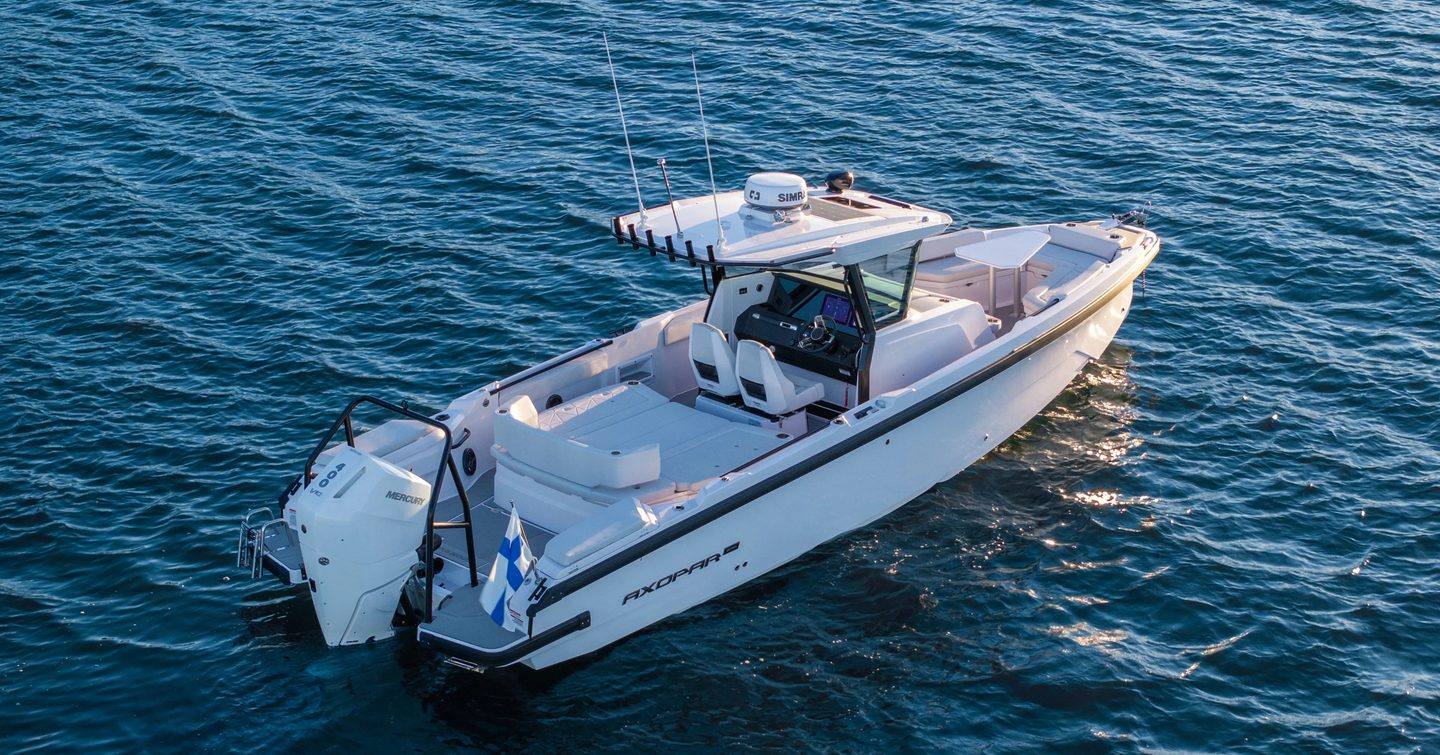
Who Are Center Console Yachts Best For?
Center console yachts appeal to:
Offshore anglers – thanks to large livewells, rod storage, and walkaround decks
Day cruisers – enjoy high speed, sunpads, and bow seating
Watersports enthusiasts – fast hulls and open access for diving or towing
Luxury buyers – premium models offer teak decks, Seakeepers, and full heads
In short, center console yachts are ideal for boaters who want speed, seaworthiness, and social space without sacrificing comfort.
Pros and Cons of Center Console Yachts
|
Pros |
Cons |
|
Excellent visibility and deck access - accessibility reduces service costs and downtime. |
Most models lack adequate sleeping quarters, galley facilities, and enclosed head compartments for comfortable overnight stays. |
|
Powerful outboard configurations that save space, are easier to service, and allow for higher speeds and shallow water operation. |
The open design provides minimal protection from sun, rain, and spray compared to enclosed cabin boats. |
|
Enhanced safety through improved situational awareness. |
Higher fuel usage at high speeds - operational costs can be significantly higher for larger multi-engine configurations. |
|
Suitable for fishing, cruising, and towing - the design eliminates fishing obstructions and provides casting space from all angles around the boat. |
Pricey at larger sizes, often exceeding comparable cabin cruiser costs. |
|
Without a large cabin structure, center consoles offer more usable deck space than comparable cabin cruisers. |
All occupants are exposed to the elements, requiring appropriate clothing and sun protection during extended outings. |
Looking for Center Console Yacht for Sale? Get Inspired by These Popular Models
Center consoles are the fastest-growing segment over 30 feet, driven by demand for versatile luxury vessels.
Bad Romance V
49m Trinity Yachts 2008 (2015)
White Knight
40m Maiora 2008 (2021)
Riva Royale
34m Riva 2023
How to Choose the Right Center Console Yacht
Key buying considerations:
Size and passenger capacity
- 30–40 ft: Ideal for fishing and short trips
- 40–55 ft: Balanced for fishing + luxury cruising
- 55+ ft: Floating entertainment platforms
Intended use
- Fishing: Prioritize deck layout, storage, livewells
- Family cruising: Look for seating, shade, and cabin comfort
- Offshore range: Check fuel capacity and hull design
Performance and engines
- Twin, triple, quad, or even quintuple outboards
- Consider joystick controls, auto-trim, and top speed
Technology
- Radar, sonar, autopilot, night vision, Seakeeper gyros
- Integrated MFDs (multi-function displays)
Resale and support
- Stick with reputable brands and dealerships
- Ensure strong manufacturer warranties and service networks
What Size Should I Choose When Buying a Center Console Yacht?
That depends heavily on your intended use, comfort level, and storage or trailering options. A 28–34 foot model offers great utility and ease of handling, especially if you’re transitioning from smaller boats or lake boating. For offshore fishing and mixed-use (cruising + sport), 35–45 feet offers more space, seating, and offshore capability. Consider fuel burn, dock fees, and maintenance complexity as the size increases.
Above 50 feet, you’re entering superyacht territory, with advanced electronics, crew quarters, and six-figure price tags—ideal for serious owners or charter setups.
Final Takeaway
A center console yacht offers a powerful blend of utility and luxury, capable of meeting the demands of offshore anglers, high-speed cruisers, and weekend entertainers alike.
Looking for center console yachts for sale? Explore our curated selection of new and used yacht listings—each one carefully vetted for authenticity, build quality, and operational history. Whether you're searching for a performance cruiser, a long-range explorer, or a proven charter vessel, our platform connects serious buyers with reliable options from established builders.
Start your search for center console yacht with confidence—every yacht we feature meets our standards for transparency and accuracy
